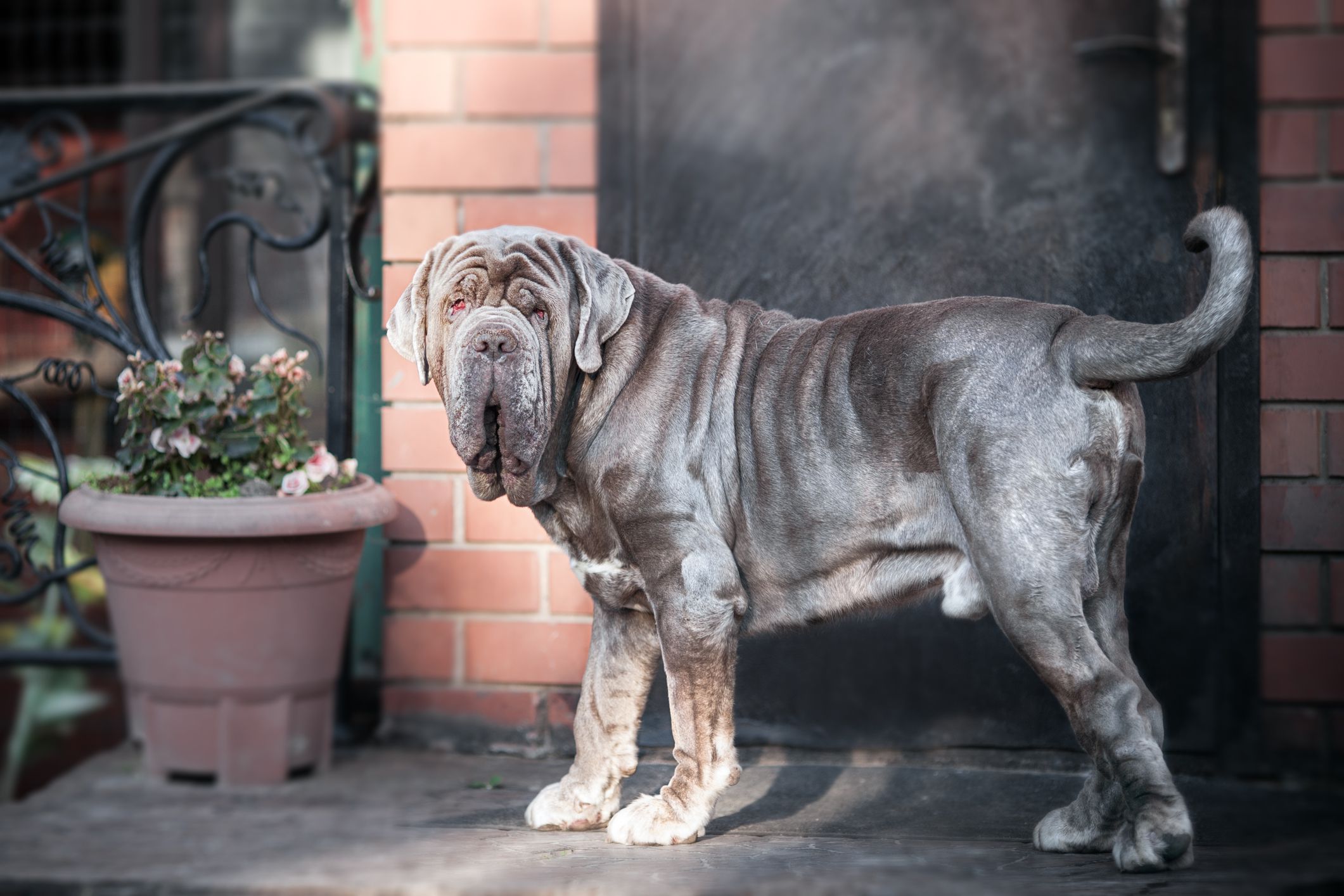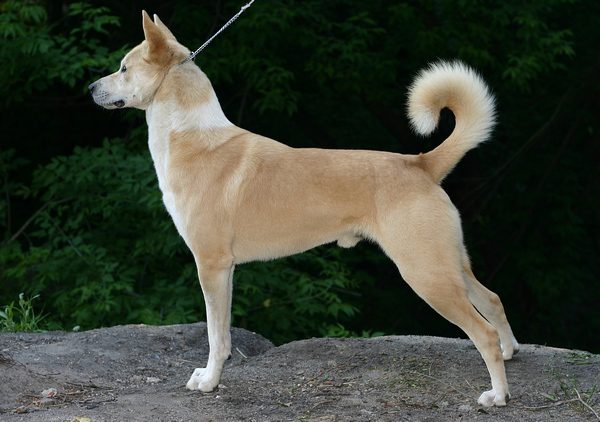Key Takeaways:
- Bullmastiffs are a large and powerful breed known for their protective nature.
- They have a calm and gentle temperament, making them great family pets.
- Bullmastiffs require regular exercise to prevent obesity and maintain their overall health.
- Proper training and socialization are crucial for Bullmastiffs to ensure they behave well around people and other animals.
- Regular grooming, including brushing their short coat and cleaning their facial wrinkles, is necessary to keep Bullmastiffs clean and healthy.
Are you ready to discover the fascinating world of Bullmastiffs? These gentle giants are more than just adorable pets – they offer a multitude of benefits for dog lovers and families alike. Whether you're considering getting a Bullmastiff or simply curious about this breed, understanding their characteristics and care is essential for creating a harmonious bond. In this article, we'll delve into the unique qualities of Bullmastiffs, explore their needs and requirements, and provide valuable tips for ensuring their well-being. So, get ready to embark on an exciting journey into the world of Bullmastiffs – where loyalty, love, and adventure await!
What is a Bullmastiff and what are its key characteristics?
A Bullmastiff is a large and powerful breed of dog that was originally bred in England. They were created by crossing Bulldogs with Mastiffs to create a dog that had the strength of a Mastiff but the agility and speed of a Bulldog. Bullmastiffs were originally used as guard dogs to protect estates from poachers.
Bullmastiffs are known for their strong and muscular build. They have a broad head with wrinkled skin, and their ears are set high on their head. Their short coat can come in various colors, including fawn, brindle, or red. They have a calm and confident demeanor, which makes them excellent family pets.
Key Characteristics:
- Size: Bullmastiffs are large dogs, with males weighing between 110-130 pounds and females weighing between 100-120 pounds.
- Temperament: They are known for being loyal, protective, and gentle with their families.
- Strength: Bullmastiffs have strong jaws and can exert great force when needed.
The origin and original purpose of the Bullmastiff breed
The Bullmastiff breed was developed in England during the mid-19th century. Gamekeepers needed a dog that could quietly apprehend poachers without causing them harm. To achieve this goal, they crossed Bulldogs (known for their tenacity) with Mastiffs (known for their size and strength).
The result was the Bullmastiff - a breed that had the perfect combination of strength, agility, and loyalty. These dogs were trained to track down intruders on estates silently and hold them until help arrived. The breed's ability to perform this job effectively made them highly valued by gamekeepers and landowners.
Original Purpose:
The original purpose of the Bullmastiff breed was to serve as a guard dog. They were trained to protect estates from poachers and trespassers. Their job was not to attack but to hold intruders at bay until their owners or authorities arrived. This required a dog with strength, intelligence, and the ability to work independently.
Physical appearance of a Bullmastiff: size and coat color
Bullmastiffs are large dogs that have a solid and muscular build. They have a broad head with a short muzzle and dark eyes that give them an alert expression. Their ears are V-shaped and set high on their head, but they are usually cropped to stand erect.
Their coat is short and dense, which helps protect them from harsh weather conditions. Bullmastiffs can come in various colors, including fawn (a light tan color), brindle (a mix of dark stripes on a lighter background), or red (a deep reddish-brown color). Some Bullmastiffs may also have small white markings on their chest.
Size:
Bullmastiffs are considered large dogs. Males typically stand between 25-27 inches tall at the shoulder and weigh between 110-130 pounds. Females are slightly smaller, standing between 24-26 inches tall and weighing between 100-120 pounds.
Coat Color:
- Fawn: A light tan color that can range from pale cream to a deeper reddish hue.
- Brindle: Dark stripes on a lighter background, creating a tiger-like pattern.
- Red: A deep reddish-brown color.
Personality traits of a Bullmastiff and how they behave around strangers
Bullmastiffs have a calm and gentle temperament, making them excellent family pets. They are known for being protective of their loved ones and are often described as "gentle giants." Despite their size, Bullmastiffs are generally good-natured and patient with children.
When it comes to strangers, Bullmastiffs can be reserved and cautious. They have a natural instinct to protect their family and property, so they may be wary of unfamiliar people. However, with proper socialization from an early age, Bullmastiffs can learn to be friendly towards strangers as long as they do not perceive any threat.
Personality Traits:
- Loyal: Bullmastiffs are devoted to their families and will protect them if necessary.
- Gentle: Despite their size, Bullmastiffs are generally gentle and patient with children.
- Cautious: They can be reserved around strangers but can become friendly with proper socialization.
Exercise and training requirements for a Bullmastiff and why they are important
Bullmastiffs require regular exercise to keep them physically fit and mentally stimulated. While they may appear lazy at times, it is crucial to provide them with daily walks or play sessions to prevent obesity and promote overall health.
Training is also essential for Bullmastiffs due to their large size and protective nature. Early socialization is crucial to ensure that they grow up to be well-behaved dogs who can interact appropriately with people and other animals. Basic obedience training should include commands such as sit, stay, come, and walking on a leash without pulling.
Exercise Requirements:
- Daily Walks: Bullmastiffs should have at least one long walk per day to fulfill their exercise needs.
- Playtime: Engaging in interactive play sessions, such as fetch or tug-of-war, can help keep them mentally stimulated.
Training Importance:
Training is important for Bullmastiffs to ensure they are well-behaved and obedient. It also helps establish a strong bond between the dog and its owner. Consistent training from an early age will help prevent behavioral issues and ensure that the dog understands its role within the family.
Health concerns for Bullmastiffs and how to ensure their well-being
Bullmastiffs, like many large breeds, are prone to certain health issues that potential owners should be aware of. One common concern is hip dysplasia, a condition where the hip joint does not develop properly. Regular veterinary check-ups and proper nutrition can help monitor and manage this condition.
Bloat, also known as gastric torsion, is another health issue that can affect Bullmastiffs. This occurs when the stomach twists, cutting off blood supply and causing severe pain. Feeding smaller meals throughout the day instead of one large meal can help reduce the risk of bloat.
Common Health Concerns:
- Hip Dysplasia: Regular vet check-ups and controlled exercise can help manage this condition.
- Bloat (Gastric Torsion): Feeding smaller meals throughout the day can reduce the risk of bloat.
Ensuring Well-being:
To ensure the well-being of a Bullmastiff, it is important to provide them with regular veterinary care, a balanced diet, and regular exercise. Maintaining a healthy weight is crucial to prevent strain on their joints. Additionally, providing a comfortable and safe living environment will contribute to their overall well-being.
Grooming and care tips for keeping a Bullmastiff healthy and happy
Bullmastiffs have a short coat that requires minimal grooming. Regular brushing with a soft-bristle brush can help remove loose hair and keep their coat looking shiny. They are moderate shedders, so occasional baths may be necessary to keep them clean.
It is important to regularly check their ears for any signs of infection or wax buildup. Cleaning their ears with a veterinarian-approved solution can help prevent ear problems. Additionally, trimming their nails regularly will prevent discomfort and potential injury.
Grooming Tips:
- Brushing: Regular brushing helps remove loose hair and keeps the coat looking shiny.
- Bathing: Occasional baths may be necessary to keep them clean, especially if they get dirty during outdoor activities.
- Ear Care: Regularly check and clean their ears to prevent infections or wax buildup.
- Nail Trimming: Trim their nails regularly to prevent discomfort and potential injury.
Care Tips:
In addition to grooming, it is important to provide proper nutrition by feeding them high-quality dog food recommended by veterinarians. Providing fresh water at all times is essential for hydration. Regular exercise, mental stimulation through interactive play, and plenty of love and attention from their owners will contribute to the overall happiness of a Bullmastiff.
In conclusion, Bullmastiffs are large and powerful dogs known for their loyalty and protective nature. They require regular exercise, grooming, and socialization to ensure a happy and healthy life.
Is a bull Mastiff a good family dog?
Bullmastiffs can be great pets for families, although they are more suitable for families with older children. Despite their large size, Bullmastiffs are not lazy and have moderate energy levels, requiring mental stimulation.
What is the personality of a bullmastiff dog?
Bullmastiffs are known for being gentle and loving towards their family members. Their relaxed and easy-going personalities make them a great choice for families with children who are well-behaved.
What are the pros and cons of bullmastiff?
Bullmastiffs are known for their gentle and loyal nature towards their family members. However, they may exhibit aggression towards unfamiliar individuals or other dogs. When it comes to training, Bullmastiffs can be challenging as they tend to be stubborn, making it harder to teach them obedience.
Is a bullmastiff an indoor or outdoor dog?
Bullmastiffs are best kept indoors as they are not suited for prolonged periods outside, particularly in hot and humid conditions as they can easily overheat. They tend to drool excessively, so it is recommended to keep a towel nearby for wiping.
How aggressive are bull mastiffs?
Bullmastiffs are typically calm and gentle, but they can become aggressive towards other male dogs and strangers when provoked. However, they are very tolerant of young children and small pets. While they may seem aloof towards strangers, they are incredibly affectionate towards their owners.
Are bull mastiffs high maintenance?
Bullmastiffs require minimal grooming due to their short, dense coat. Simply brushing them once a week should be enough. Only bathe your Bullmastiff when they get dirty. In addition to brushing, make sure to regularly brush their teeth, trim their nails, and check their ears.















